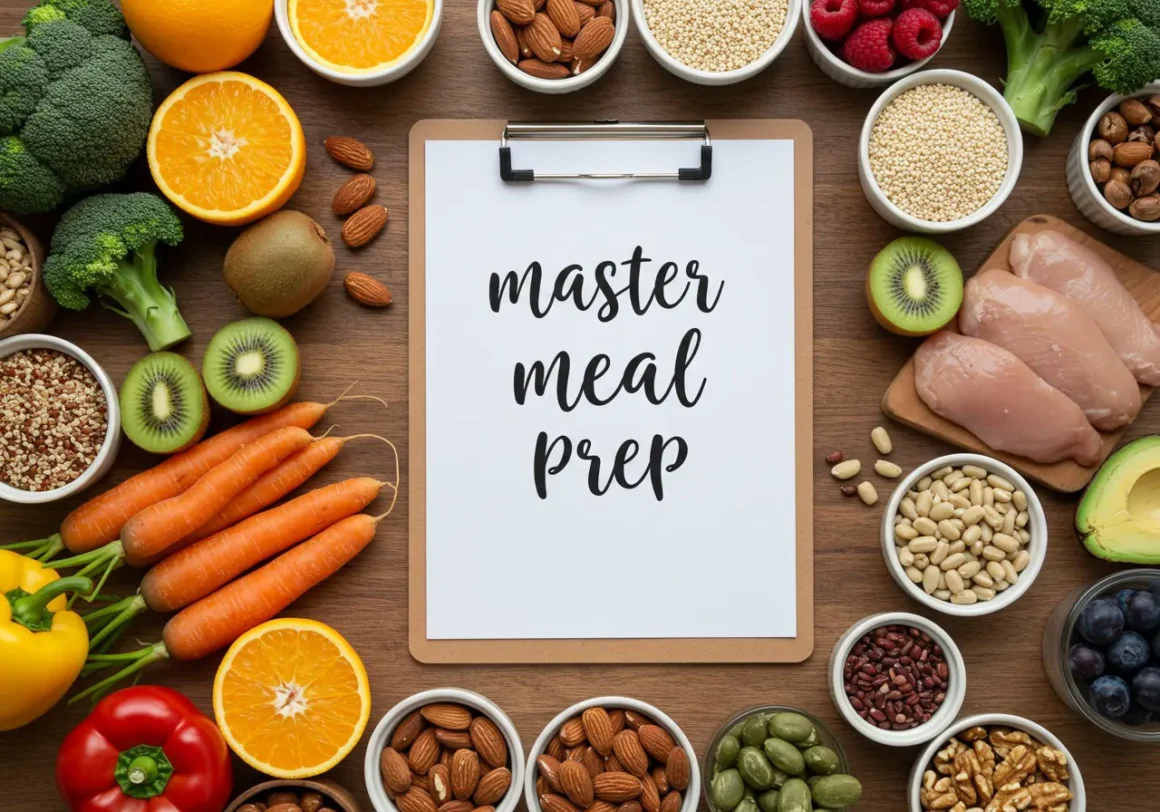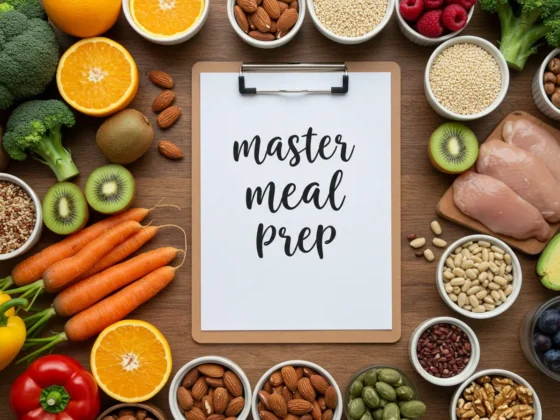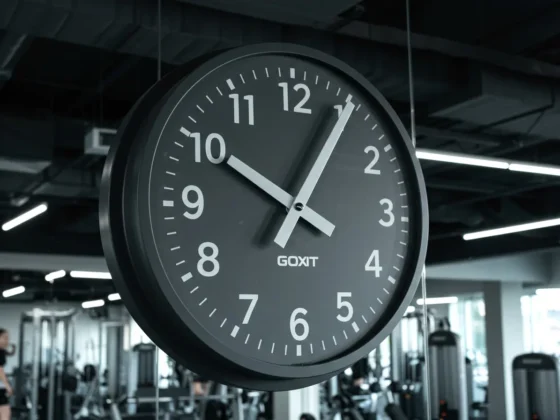Okay, Fit Fellows let’s talk about macros and micros. For a lot of people, these words sound like they belong in a chemistry lab, not on their dinner plate. But honestly, understanding them is like getting the owner’s manual for your body’s engine. It’s not about being rigid or stressed; it’s about making smarter choices to feel better, perform better, and live healthier.
Think of your body like a high-performance car. It needs the right fuel in the right amounts, plus all the essential fluids and parts to keep everything running smoothly.
The Big Picture: Macros
Macros, or macronutrients, are your fuel and structural materials. They provide the bulk of your energy (calories) and are needed in larger quantities.
- Protein: This is the body’s primary building block. Muscles, organs, skin, hair – they all need protein to be built and repaired. It’s also crucial for making enzymes and hormones. Eating enough protein is key for muscle growth (hypertrophy), recovery after exercise, and feeling full. When you lift weights or even just go about your day, you’re breaking down tissues, and protein is what helps stitch them back together stronger.
- Carbohydrates: These are your body’s preferred immediate energy source. When you eat carbs, they’re broken down into glucose, which fuels your brain and muscles. Not all carbs are created equal, though. Think complex carbs (like whole grains, vegetables, legumes) that provide sustained energy and fiber, versus simple sugars (like candy, sugary drinks) that give a quick spike followed by a crash. Carbs are essential, especially if you’re active; they power your workouts and replenish your energy stores.
- Fats: Often unfairly demonized, healthy fats are absolutely vital. They provide a concentrated energy source, help absorb fat-soluble vitamins (A, D, E, K), are essential for hormone production (including testosterone and estrogen), and protect your organs. We’re talking about unsaturated fats from things like avocados, nuts, seeds, and olive oil, and essential fatty acids like omega-3s found in fatty fish. These fats play a huge role in everything from brain health to reducing inflammation.
Getting the right balance of these macros is fundamental. Your ideal ratio depends heavily on your goals (e.g., fat loss, muscle gain, endurance training) and your activity level. Someone training for a marathon will need significantly more carbs than someone focused on pure strength building with lower activity outside the gym.
The Finer Details: Micros
While macros provide the bulk energy, micronutrients – vitamins and minerals – are the tiny but mighty catalysts that make everything work. You need them in much smaller amounts, but a deficiency in even one can throw a spanner in the works.
Think of them as the spark plugs, oil, and coolant for your car. They don’t provide the main power, but the engine won’t run right without them.
- Vitamins: Organic compounds that perform countless functions. Vitamin C is crucial for your immune system and collagen production. B vitamins are essential for energy metabolism. Vitamin D helps with calcium absorption for bone health. Vitamin K is vital for blood clotting. The list goes on!
- Minerals: Inorganic substances needed for various bodily processes. Calcium is fundamental for bones and muscle function. Iron is necessary for oxygen transport in your blood. Potassium helps regulate blood pressure and fluid balance. Zinc is important for immune function and wound healing.
A diet lacking in variety, particularly in fruits and vegetables, is almost guaranteed to have micronutrient gaps. This can manifest as low energy, poor recovery, compromised immunity, and can contribute to long-term health issues.
Putting it into Practice: What You Need & How To
You don’t need a degree in nutrition or expensive equipment to start applying this. What you do need is awareness and a willingness to learn about the food you eat.
- Start with Awareness, Not Obsession: Don’t feel pressured to track everything meticulously from day one. Just start paying attention. Look at your plate. Are you getting a source of protein, some colorful veggies (carbs and micros), and a healthy fat?
- Prioritize Whole, Unprocessed Foods: This is the easiest shortcut to hitting both macro and micro targets. Foods in their natural state or minimally processed are generally nutrient-dense. Think a piece of grilled chicken over a chicken nugget, or an apple over apple juice.
- Build Your Plate Strategically: A simple visual guide: Fill half your plate with non-starchy vegetables (think broccoli, spinach, peppers – bursting with micros and fiber). Dedicate a quarter to a protein source (chicken, fish, beans, tofu). Use the last quarter for a quality carbohydrate (quinoa, brown rice, sweet potato) and include a source of healthy fat (a few nuts, avocado slices, olive oil on your veggies).
- Listen to Your Body: How do you feel after eating certain foods? Do you have sustained energy or crash? Pay attention to hunger and fullness cues.
- Consider Tracking (If You Want to Dial It In): If you have specific goals (significant fat loss, muscle gain for performance), using a food tracking app can be incredibly insightful. It helps you see exactly how many calories you’re consuming and your macro breakdown. You can also see where you might be falling short on certain micronutrients. Popular apps include MyFitnessPal, Cronometer (great for detailed micronutrient tracking), and LoseIt.
- Don’t Fear Any Macro Group: All three macros are essential. Cutting one out drastically without a medical reason is usually counterproductive and unsustainable.
- Eat the Rainbow: For micros, variety is key. Different colored fruits and vegetables offer different sets of vitamins and minerals. Aim to eat produce from across the spectrum throughout the week.
- Consistency Over Perfection: Some days will be perfectly balanced, others won’t. That’s life. The goal is consistent effort over time, not flawless execution every single meal.
Useful Tools & Resources
- Food Tracking Apps: As mentioned, great for getting a clear picture of your intake.
- Online Macro Calculators: Provide a starting estimate based on your age, weight, height, activity level, and goals. Remember these are estimates!
- Reliable Nutrition Websites/Databases: Sites like the USDA FoodData Central can give you detailed nutritional information for thousands of foods. Be wary of fad diet sites; look for sources backed by science.
- Learning Portion Sizes: Get familiar with what a serving size looks like for different food groups. This helps with estimation even if you’re not tracking precisely.
- Consider a Professional: If you have specific health conditions, dietary restrictions, or performance goals, a registered dietitian can provide personalized guidance.
Understanding macros and micros isn’t about making food complicated; it’s about empowering you to make informed choices. It’s about knowing that the protein helps rebuild you after a tough workout, the carbs fuel your energy, the fats keep your hormones happy, and the vitamins and minerals ensure all those complex internal processes run smoothly. By paying a little attention to these building blocks, you’re not just eating, you’re optimally fueling your amazing machine. And that’s a powerful thing.

















